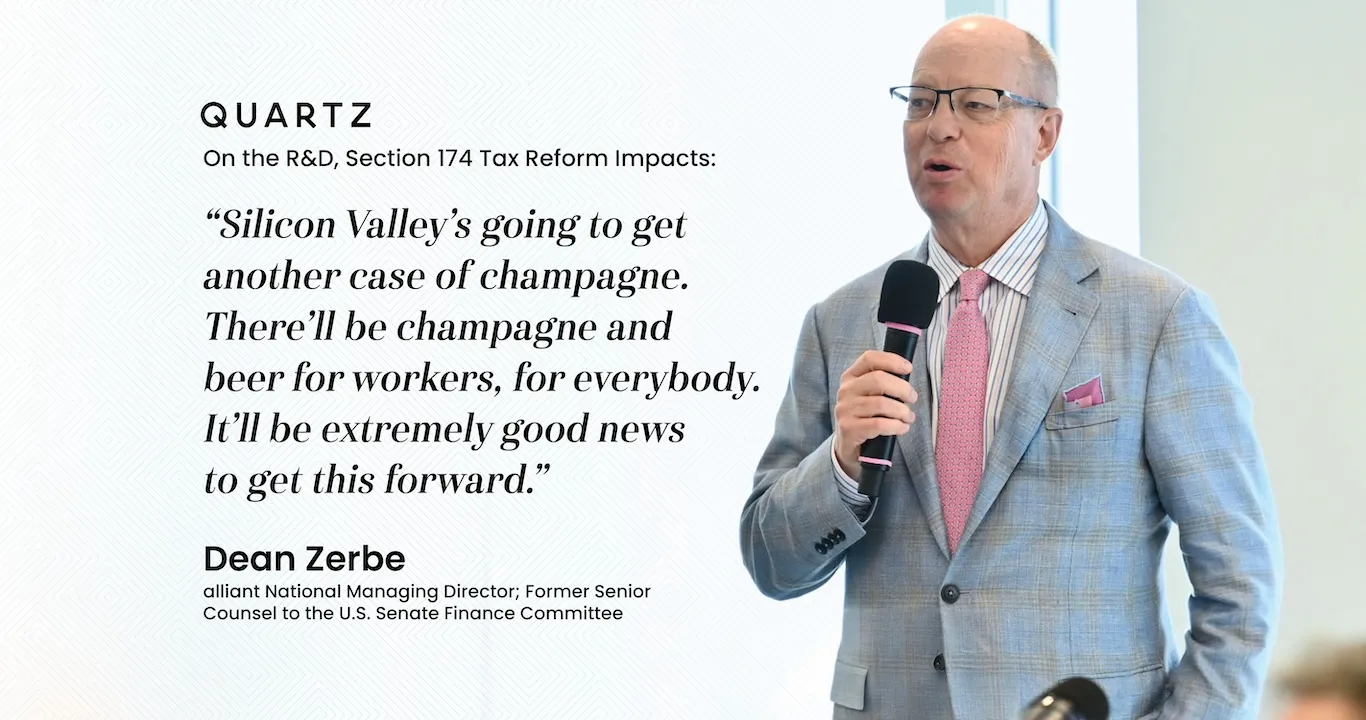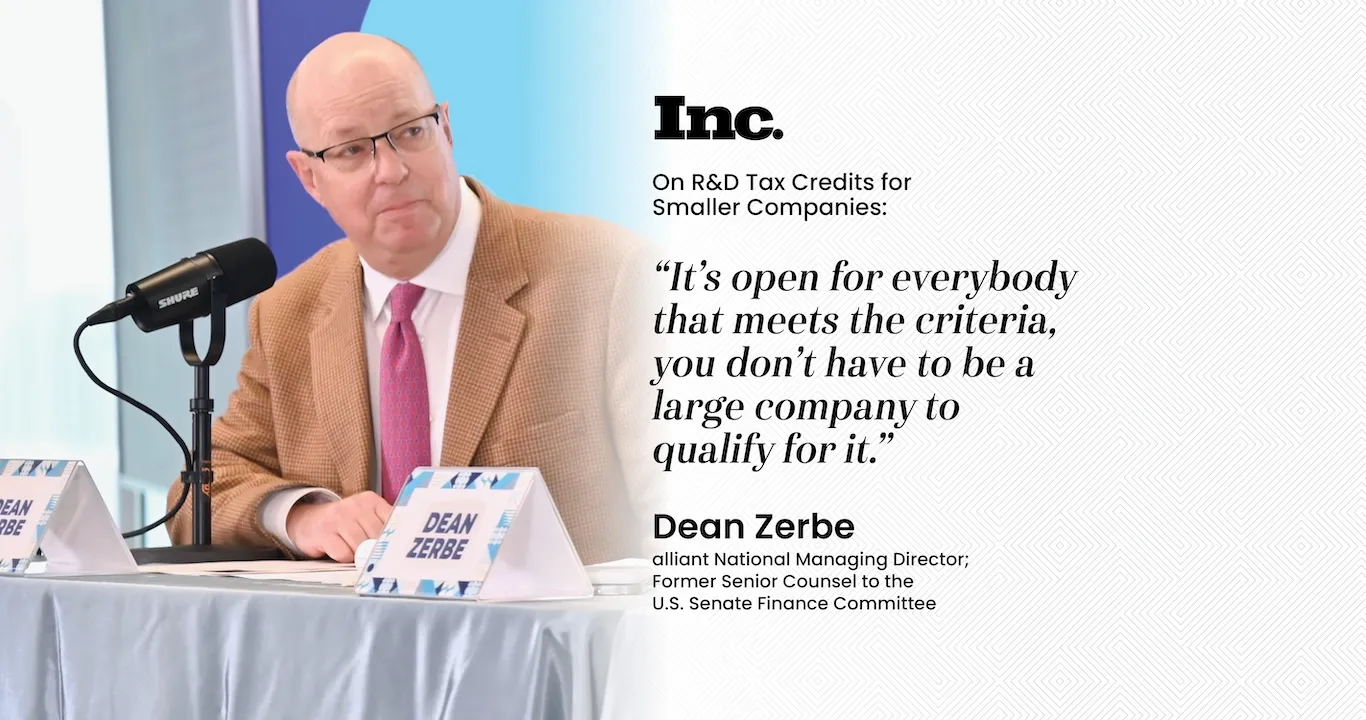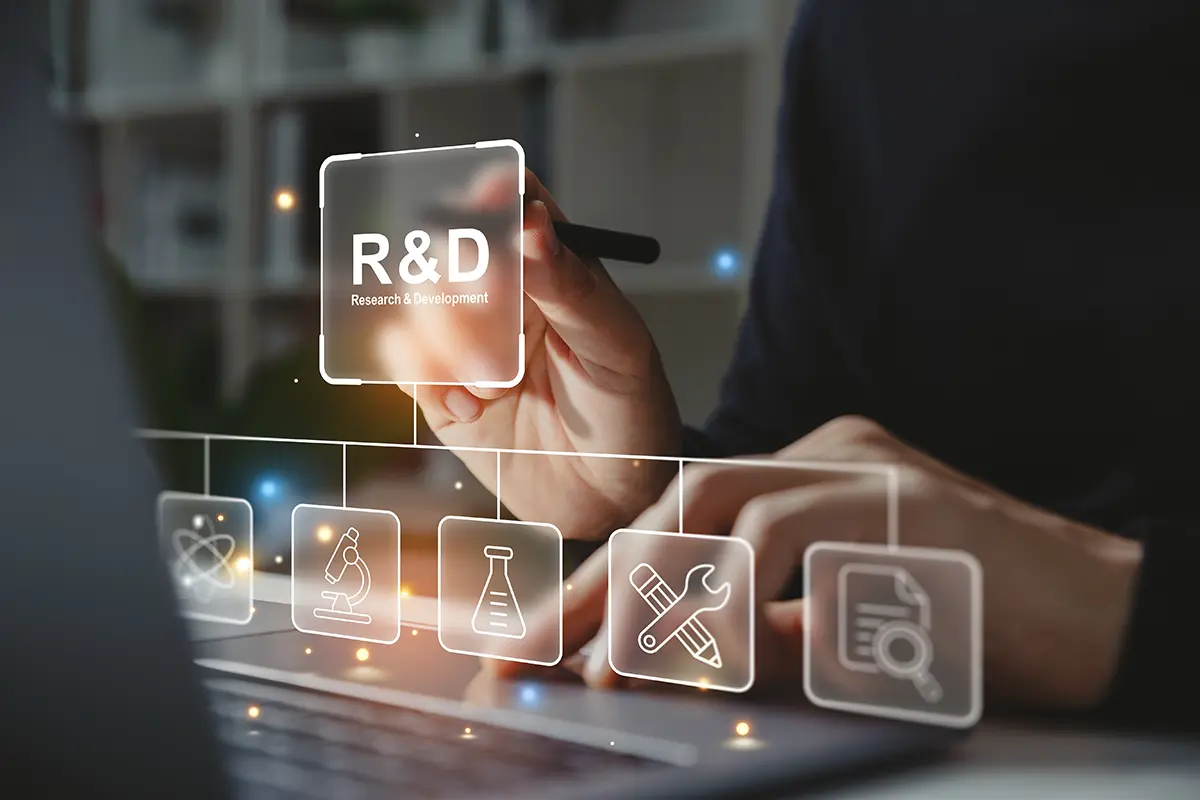PUBLISHED IN
Byline by Myron Moser, Chairman Emeritus Hartfiel Automation alliantgroup Strategic Advisory Board Member and
Dhaval Jadav,
Chief Executive Officer of alliantgroup
If you have any questions about this article, please send us a message.
US businesses can take advantage of the R&D credit to onshore production & minimize the risks associated with long and complex supply chains
The U.S. has historically been one of the most dominant manufacturing locations in the world. But in recent years, we have seen many American companies choose to offshore their manufacturing activities to China, which touts a large workforce and dramatically lower operation costs.
America’s supply chain operations have continued to move offshore, particularly in the aftermath of the COVID-19 pandemic, which showcased U.S. vulnerabilities as China’s supply chains remained relatively stable. In fact, the U.S. International Trade Commission has found that China is the single largest offshoring destination for U.S. companies.
On paper and with profit-maximizing objectives, this isn’t necessarily surprising news. But, with targeted incentives and the amplification of existing benefits, the U.S. can (and should) push American businesses that are now overseas to reshore their manufacturing activities, especially as China begins to experience increased manufacturing wages and a deteriorating workforce.
The building blocks to successful reshoring
In terms of the basic benefits, reshoring operations will lead to minimized supply chain risks, increased quality control, and reduced lead times. Still, in the end, money talks, and with American manufacturing costs not being competitive, businesses will need monetary incentives to keep their businesses here.
To that end, Congress should consider expanding tax or other business incentives that reward companies that choose the U.S. as their primary center of manufacturing operations. For example, the Reshoring American Manufacturing Act of 2020, or the RAM Act, allowed for businesses to claim a tax credit of up to $25 million in one tax year for the costs of eligible reshoring expenses, including the transportation of equipment from China to the U.S.
Notably, other incentives like the Research and Development Tax Credit (R&D) have existed for decades as a way to reward businesses for their innovation efforts aimed at improving products and processes – a shoe-in for most manufacturing companies.
However, a common misconception surrounding the R&D tax credit is that it is only available to researchers and scientists.
For most companies that are innovating in one or another, the tax code likely allows them to expense R&D costs and claim a tax credit for certain R&D expenses. However, too many businesses in the manufacturing sector prematurely disqualify themselves from claiming this additional financial support.
Determining eligibility
As prescribed in 26 U.S.C. § 41, the R&D credit may be claimed by taxpaying businesses that develop, design, or improve products, processes, formulas, or software. For manufacturers looking to leverage this resource for their reshoring efforts, the first step is for businesses to work closely with their advisors and CPAs to scrutinize daily activities and determine if the innovation they are pursuing qualifies them for available tax incentives like R&D.
This scrutiny includes:
- Documenting all potential R&D activities (project lists, notes, expense ledgers, etc.)
- Gathering employee testimony
- Keeping track of R&D wages, as well as contractor, supply and computer costs
As long as activity is clearly documented, a variety of business innovation within the manufacturing industry can qualify. Some examples include:
- Introducing new and/or improved efficiencies to a wide range of manufacturing operations – a qualification where reshoring efforts would likely fall
- Implementing and designing automation solutions
- Integrating new supply chain technology
Especially with innovation happening so rapidly, Congress needs to make sure businesses know that emerging technologies can form the basis of their R&D claim.
For example, as AI, machine learning, and automation become stronger forces across the globe, companies that are working to integrate these tools into their business operations and reshoring plans will likely qualify for R&D incentives. Not only will this support the companies themselves, but it will support America’s manufacturing productivity and competitiveness in the global marketplace.
Looking beyond incentives
Beyond providing existing tax incentives, the U.S. government should also help businesses reshore by eliminating workforce roadblocks. As technical labor is still in short supply here in the U.S., Congress should consider simplifying, expediting, or prioritizing immigration visas for employees of companies who are looking to bring in foreign labor. This simplified process should apply from the work visa stage through the worker obtaining citizenship status as an American, assuming the employee maintains their work status.
This method has been introduced within in the agriculture industry with the Farm Workforce Modernization Act which would provide undocumented farmworkers with a path to legal immigration status and citizenship. This solution, meant to combat a severe labor shortage, can and should be considered in the manufacturing space as well.
Doing so will create a win-win scenario – an increased labor force in the U.S. while pulling operations away from competitors abroad.
Immediate action
As of May, a poll found that 82% of U.S. business leaders are either already reshoring or planning to reshore their overseas operations. This is a dramatic increase, and trend in the right direction, from the 55% that was reported in January.
In the near term, the U.S. government should work to not just offer bolstered incentives for reshoring operations, but highlight the risks of offshoring like the costs of shipping and import duties, as well as what some have called the “hidden cost” of businesses over-ordering product overseas to protect against inventory pitfalls and longer lead times. We’ve seen this before with prominent U.S. companies like Deere & Company, which last year invested $29.8 million to begin manufacturing harvesters in America instead of China.
In most cases, the benefits of reshoring can outweigh the costs. Congress must act to strengthen all resources that will spur all American businesses to come back home, and businesses in the manufacturing sector need to take advantage of key economic incentives they have likely overlooked thus far.
Featured Leadership

Myron Moser is Chairman Emeritus of Hartfiel Automation in Minnesota. He joined Hartfiel Automation in 1990 and quickly rose in the ranks to the executive level in 1995. Myron is recognized as one of the top executives in the U.S. automation industry. Under his leadership, Hartfiel Automation experienced incredible growth, continued to diversify its product offerings in hydraulics, aluminum extrusions, and robotics and automation solutions. For more than 60 years, his company helped strengthen the American manufacturing industry through innovative solutions. Myron leverages his decades of experience as a top executive in the world of automation for strategic benefit of alliantgroup’s clients and CPA partners.

Dhaval Jadav is Chief Executive Officer of alliantgroup, America’s leading consulting and management engineering firm, which helps American businesses overcome the challenges of today to prepare them for the world of the 22nd Century and beyond. Jadav co-founded the firm in 2002 to be unlike any other consultancy, with an emphasis on partnerships with clients to not only identify but also implement quantifiable solutions to their most critical concerns.
Since its inception, his passion to help and serve U.S. businesses (and their CPA firms) has resulted in alliantgroup investing tens of millions of dollars of the firm’s resources annually in knowledge development, learning and advocacy. To date, alliantgroup has infused 30,000+ clients with over $16 billion in cash to optimize their performance and accelerate growth of their businesses.



